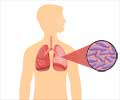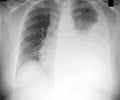A recent study has pinpointed that the cells of humans and animals who have recovered from tuberculosis had prematurely aged 12 to 14 years.

‘Tuberculosis (TB) is a potentially serious infectious disease caused by a type of bacterium called Mycobacterium tuberculosis. The bacteria usually affect the lungs, but also can invade other organs.’





To measure the aging of the cells, researchers looked at the epigenetic clock of the cells. Epigenetics looks at how the DNA inside every cell is coiled. As we age, how the DNA is coiled changes, and severe infection is changing it in such a way to increase premature aging. In this study, the researchers studied multiple cohorts and multiple tissue types, and discovered that tuberculosis induced perturbations in epigenetic regulation, specifically in the regulation mediated by DNA methylation. These changes correlated with oxidative stress-induced senescence and was associated with premature cellular aging. These processes were conserved across both guinea pigs and humans.
DiNardo, who also is with Texas Children’s Hospital, says that this is an important area to look into after any severe infection, including sepsis or even SARS-CoV-2. The severity of the infection also could play a role in the aging of the cells.
“A multi-omic epigenetic clock assay could become part of the standard of care for infectious diseases and further inform increased risk for comorbidities after chronic conditions or environmental exposure,” said Dr. Cristian Coarfa, associate professor of molecular and cellular biology at Baylor and co-corresponding author of the paper. Coarfa also is with the Dan L Duncan Comprehensive Cancer Center at Baylor.
A multi-omic approach would integrate epigenomics and other ‘omics,’ such as proteomics (proteins produced), metabolomics (metabolites present) and microbiomics (microorganisms) data.
Advertisement
Their report appears in the journal Aging.
Advertisement















